Contents
- What Is Licorice Root And Its Nutrition Fact
- Licorice Root Benefits While Breastfeeding According To Western Medicine
- Licorice Root Benefits While Breastfeeding According To Chinese Medicine
- Is Licorice Root Safe While Breastfeeding?
- Is Licorice Root Safe During Pregnancy?
- Is it Safe to Consume Licorice Candy While Breastfeeding?
- Possible Side Effects Of Licorice While Breastfeeding or Pregnant?
- Breastfeeding Formula Tea That Contains Licorice Root
- Prepare Licorice Root Tea While Breastfeeding
- Use Licorice Root as Food While Breastfeeding
What Is Licorice Root And Its Nutrition Fact
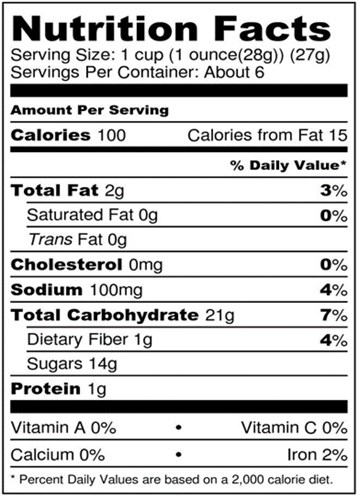
Licorice, also known as Glycyrrhiza, is a perennial herb primarily found in Asia, South Asia, and Southern Europe. The name is derived from the Greek words 'glukos', meaning sweet, and 'riza', meaning root.
Glycyrrhizin, found in licorice root, is approximately 50 times sweeter than sugar. Due to its sweetness, it is a suitable ingredient for sweets and beverages.
This herb has been used for its therapeutic benefits for centuries. In ancient Arabia, licorice was used to treat cough, while in ancient Greece, it was used to treat asthma and other respiratory conditions. According to Ayurveda, licorice is good for reducing swelling and muscle spasms. Many Traditional Chinese herbal formulas also contain licorice due to its detoxifying properties.
It is also frequently used after birth given to help the nursing mother to recover from physical and mental stress as well as to increase milk supply. For this purpose, it is mostly used together with other herbs in tea and food preparation to increase their effects.
Licorice Root Benefits While Breastfeeding According To Western Medicine
Eating licorice root while breastfeeding has a lot of advantages for both the nursing mother and the baby. The main ones are:
- Improved Digestion
Licorice protects the mucous membranes of the gut by increasing the synthesis of mucin, a substance that protects against the detrimental effects of stomach acid and other noxious substances. It can also treat indigestion and heartburn in breastfeeding mothers.
- Increased Breastmilk Supply
Licorice consumption while breastfeeding can actually boost breastmilk supply due to the presence of glycyrrhizic acid. If you want to enhance your milk supply, eating a small amount of licorice may be beneficial.
- Better Oral Health
Licorice aids in cavity prevention and is therefore helpful for maintaining oral health. Chewing the root can clean teeth and prevent gum disease in breastfeeding mothers.
- Helps in Fighting Infections
According to numerous scientific research, licorice can remove malarial parasites from the body. Additionally, it can eliminate viruses like the influenza virus from the mother and baby. It may also provide immunity to the newborn.
Licorice Root Benefits While Breastfeeding According To Chinese Medicine
Licorice root is an excellent herb to use for women going through postpartum changes. In fact, for 2000 years of Chinese 'Zuo Yue Zi' culture (one month of postpartum recovery program), the mothers are given special herbs such as licorice root to recover from the physical and physiological stresses of birth-giving. It also helps in increasing the milk supply.
Here is the list of licorice features according to Traditional Chinese Medicine (TCM):
1. It tonifies General Qi Energy
Lack of general Qi energy is one of the most common disharmonies in breastfeeding mothers.
When the overall Qi becomes depleted due to difficult birth given, poor diet, or emotional stress, a mother can experience various postpartum issues such as lethargy, general fatigue, depression, pale tongue, and complexion. General Qi energy deficiency is also the primary reason for the low milk supply. Licorice root is able to promote overall Qi production in a gentle way.
In addition to that, it especially boosts the Qi energy of the digestive system. Thus it helps in food digestion and promotes the absorption of nutrients as well as their transfer to the different parts of the body. It contributes to the production of blood as well. All these lead to the replenishment of General Qi and an increase in breast milk production.
2. It gently clears Toxic-Heat
The TCM term ‘Toxin’ refers to bacteria in western theory, while ‘Heat’ refers to inflammation. This Toxic-Heat in the breast is responsible for numerous postpartum issues such as breast engorgement, clogged milk duct, mastitis, chapped nipples, thrush, etc.
Licorice is able to decrease this Toxic-Heat either by acting on its own or by enhancing the effects of other powerful Toxic-Heat clearing herbs like Dandelions.
3. It has an impact on the Stomach, Spleen, Heart, and Lung
Licorice exerts a positive effect on these four organs. Since their related Acupuncture Channels pass through the chest, thus licorice is able to direct its impact to the breast, so as to increase Qi energy and remove Toxic-Heat there.
4. It relieves spasms and pains
After childbirth, many mothers may suffer from breastfeeding discomforts such as itchy nipples or sharp and shooting pain. These are often caused by clogged milk ducts, engorgement, milk blebs, or mastitis. Licorice is able to relieve these discomforts to an extent. It is often combined with other pain-removing herbs to enhance their effects.
5. Licorice’s herb nature is ‘neutral’
According to TCM, Licorice is a neutral herb. This suggests that it is suitable for all body types no matter whether they are cold, hot, excessive, or deficient.
6. It harmonizes and enhances the effects of other herbs.
In TCM formulas, often herbs with contradicted natures are put together. For example, a Blood nourishing herb such as Dong Quai is used to make up for the blood loss during birth given. In the meanwhile, cooling herbs such as Dandelion is able to clear Toxic-Heat from the imflammated breasts while breastfeeding. The first herb is to 'boost' while the latter one is to 'drain'. In this situation, licorice can be added to harmonize the effect of these two herbs.
In fact, it is an excellent detoxifying herb that may be combined with practically any other herb to balance its effects. On top of this feature, licorice is often added in formula to enhance other herbs effects as well.
Is Licorice Root Safe While Breastfeeding?
According to the U.S. Food and Drug Administration, licorice and its extract are "generally recognized as safe" (GRAS).
However, long-term, excessive use of licorice root while breastfeeding is not recommended, as the newborn may become weak and unable to suckle nipples properly.
Is Licorice Root Safe During Pregnancy?
According to the “University of Maryland Medical Center”, licorice use should be avoided by pregnant women or used under professional instruction. Although the root has numerous health benefits, it contains glycyrrhizin, which may potentially cause health issues such as water retention, high blood pressure, fatigue, and headaches in pregnant women.
Is it Safe to Consume Licorice Candy While Breastfeeding?
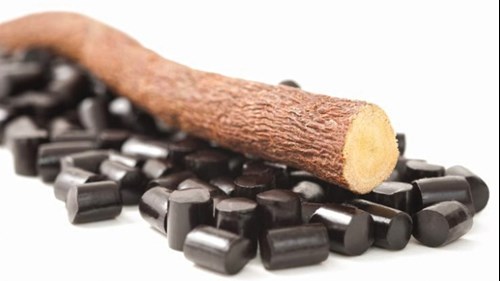
Licorice candy is a delicious, chewy candy that is generally flavored with licorice root extract, berries or other substances.
It mostly comes in black or red color. The black licorice candy is also called 'traditional licorice candy' and it mostly contains a blend of sugar, gelatin, and licorice extract. The red licorice candy, on the other hand, doesn't actually contain any licorice. It simply has licorice flavor taste.
These candies are mostly safe to use during breastfeeding. However, if it is consumed in large quantities, it may cause severe adverse effects such as blood pressure or stress hormone abnormalities, Therefore, always consult your doctor, if you are planning to use these candies on daily basis.
Possible Side Effects Of Licorice While Breastfeeding or Pregnant?
Licorice is generally safe to use for both pregnant and breastfeeding mothers. However, excessive and frequent use may cause various side effects such as water retention, hypertension, liver, kidney, and heart damage, diabetes as well as cataracts, etc.
If a nursing mother uses diuretic drugs, licorice should be avoided since it lowers potassium levels in the body and can be dangerous to the mother. Consuming licorice during pregnancy may also lead to premature labor or miscarriage.
However, keep in mind that these side effects only occur due to consuming large quantities of Licorice. According to herbalists, a 2-4 TBSP of root per day or 3-10 grams of root per day is considered generally safe.
Breastfeeding Formula Tea That Contains Licorice Root
Although Licorice offers numerous benefits for breastfeeding mothers, its excessive and frequent use is not recommended. On top of that, it is a mild herb and is mostly combined with other herbs in formulas, playing an assistant or harmonization role. Licorice's own effect can also be maximized this way.
For the above two reasons, we don't recommend using single herb of licorice on daily basis while breastfeeding. Try Unblock Nursing Tea or Milk Boost Tea which contain a blend of well selected herbs with licorice, with balanced quantity for daily use. Both teas are created exclusively for breastfeeding mothers.
Additionally, they have been tested and approved for use by thousands of nursing mothers.
- Unblock Nursing Tea
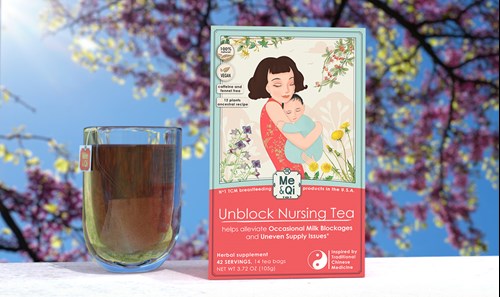
Unblock Nursing Tea is a blend of 12 natural herbs such as Licorice root, Dandelion, and Honeysuckle flowers. This powerful formula contains a good balance of cooling, warm and neutral herbs that aid in clearing Toxic-Heat and promoting milk flow.
It can help various breastfeeding issues such as breast engorgement, clogged milk ducts, nipple fissures, thrush, mastitis, milk bleb, etc. When these breastfeeding issues are solved, the milk supply will naturally increase.
- Milk Boost Tea

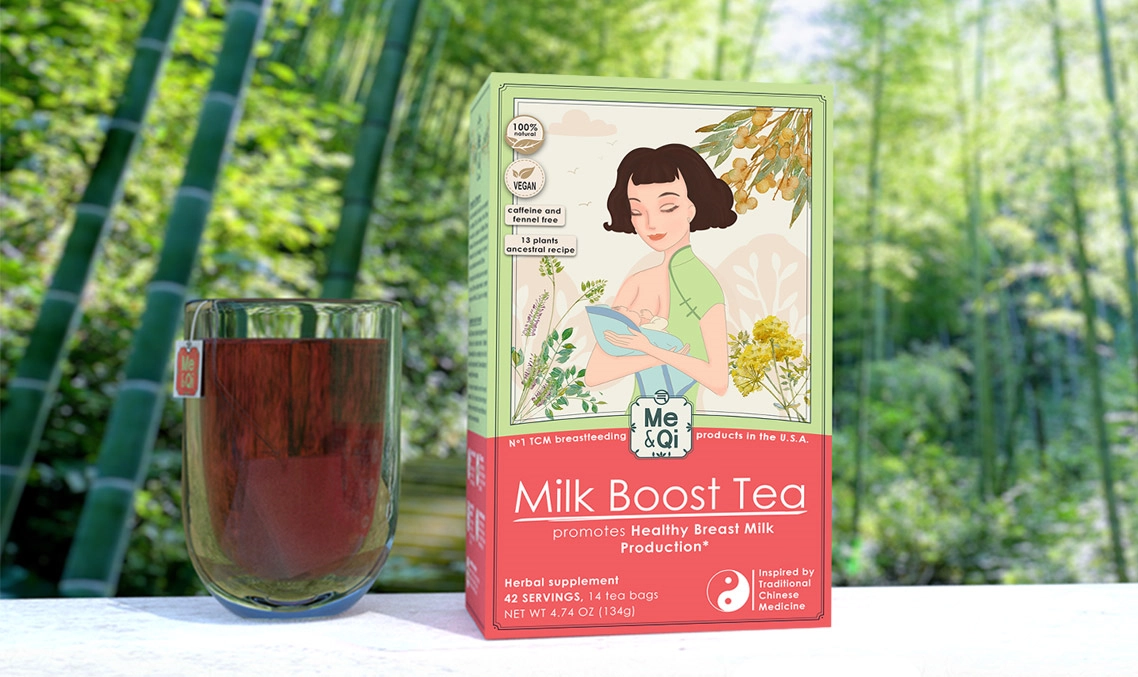
Milk boost tea is a blend of 13 herbs that aims to increase breast milk quantity and quality by tonifying and regulating Qi energy. The herbs such as Kudzu root, Licorice, Yam, and Longan replenish Qi. While herbs like Amomum fruit and Flowering quince promote Qi circulation around the body.
Prepare Licorice Root Tea While Breastfeeding
As a tea, licorice root can be used together with ginger, peppermint, honeysuckle flower, jujube date, rhubarb, raspberries, etc.
The Instructions
- Boil 1 cup of water over low heat in a kettle or saucepan.
- Add 1 tablespoon of the licorice root tea blend to the boiling water and let it simmer for 30 to 45 minutes on low heat.
- Immediately strain and pour tea into a cup, then serve.
- Alternatively, you can create the tea by pouring boiling water over the herbs, covering them for 15 minutes, and then straining them.
- Serve in a cup and enjoy.
Use Licorice Root as Food While Breastfeeding
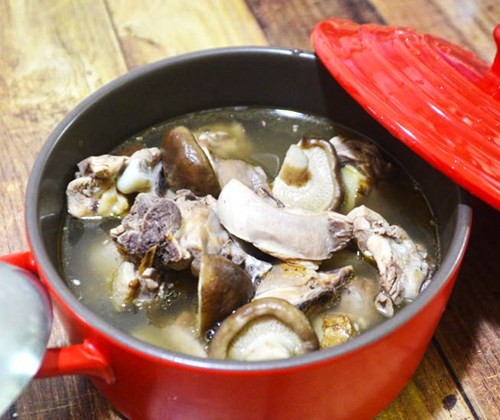
In the west, people mostly use licorice root in candy, chocolate, cookies, and lozenges. It is also available in soft drink form called Sugarelly.
Before making any dish with Licorice, make sure to wash the licorice root thoroughly by soaking in water and then cut it into slices and leave it to dry. Or you can easily buy clean and prepared licorice root from shops. It is available in the form of whole roots, sliced pieces, or extracts.
Licorice can also be added to dishes in the form of powder such as Herbal Apple Cider Vinegar with Licorice. To make this power, it requests the following ingredients:
- 1 tablespoon dried licorice root
- 2 fresh rosemary sprigs
- 2 cups apple cider vinegar
- 4 fresh thyme sprigs
The Instructions
- Combine the apple cider vinegar with the thyme, licorice root, and rosemary, in a large glass jar.
- Allow the apple cider vinegar to steep for at least two to four weeks in a dark, cool location with a tight-fitting lid.
- Strain the herbs from the apple cider vinegar.
- Refrigerate it until ready for use.
In China, licorice is mainly used as a seasoning ingredient in soup making, especially for women after birth giving. For example, licorice chicken soup is a famous postpartum dish that can increase breast milk supply.

